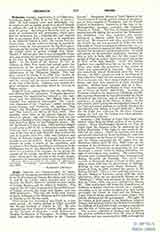

Urdaneta, ANDRES, Augustinian, b. at Villafranca, Guipiizcoa, Spain, 1498; d. in the City of Mexico, 1568. He had studied Latin and philosophy, but having been left an orphan resolved to devote himself to military life, and in the Italian wars obtained the rank of captain. Returning to Spain he took up the study of mathematics and astronomy, which gave him an inclination for a seafaring life, and induced him to accompany Jofre de Loaiza in an expedition to the Molucca Islands in 1525. He served there for eleven years. On his return to Europe he landed in Lisbon, where he was prosecuted by the Portuguese Government for having told the story of his voyage to the islands when he passed through New Spain. Charles V did not give him a very favorable reception, and, wearied by his many adventures, he returned to the City of Mexico and entered the Augustinian Order. At the death of the viceroy, D. Luis de Velasco, in 1564, New Spain had passed under the government of the Audiencia, one of whose first cares was to equip an expedition for the conquest and colonization of the Philippine Islands. This had been ordered by Philip II in 1559, Fray Andres de Urdaneta having been designated as the commander, and the viceroy had the matter under consideration at the time of his death. Urdaneta was considered a great navigator, and especially fitted for cruising in Indian waters.
Philip II wrote urging him to join the expedition, and offering him the command. Urdaneta agreed to accompany the expedition but refused to take command, and the adelantado, Don Miguel Lopez de Legazpi, was appointed commander. The expedition, composed of the “Capitana”, which carried on board Legazpi and Urdaneta, the galleons “San Pablo” and “San Pedro”, and the tenders “San Juan” and “San Lucas”, set sail on November 21, 1564. After spending some time in the islands Legazpi determined to remain, and sent Urdaneta back for the purpose of finding a better return route and to obtain help from New Spain, for the Philippine colony. He left the Island of Cebu in July, 1565, and was obliged to sail as far as 36° N. lat. to obtain favorable winds. Urdaneta had to assume command in person, four-teen of his crew died, and when the ship reached the port of Acapulco on October 3, 1565, only Urdaneta and Felipe de Salcedo, nephew of Legazpi, had strength enough to cast the anchors. From Mexico he went to Europe to make a report of the expedition, and returned to New Spain, intending to continue on to the Philippines, but he was dissuaded by his friends. He wrote two accounts of his voyages; the one giving the account of the Loaiza expedition was published; the other, which gives the account of his return voyage, is preserved in manuscript in the archives of the Indies.
CAMILLUS CRIVELLI

